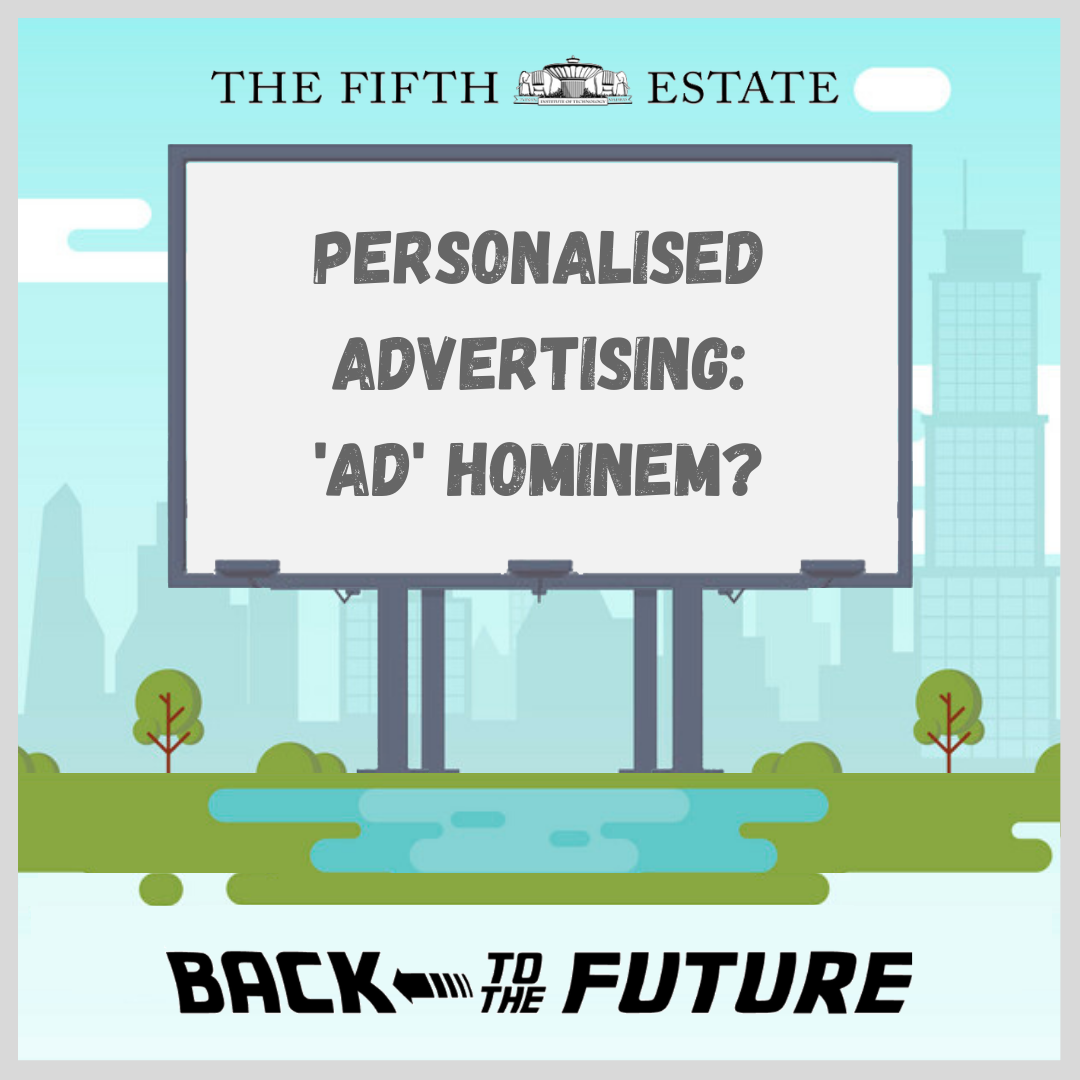Design: Hardhik Pinjala
“We don’t choose the things we believe in; they choose us.” This powerful quote is from the movie Minority Report, released in 2002. This award-winning science fiction and action drama made by legendary filmmaker Steven Spielberg stars Tom Cruise in the pivotal role of John Anderton. It’s loosely based on the famous science fiction writer Philip K. Dick’s short story with the same name. Here’s a spoiler-free premise of the movie – it is set primarily in Washington DC in 2054, where ‘PreCrime’, a specialized police unit, apprehends potential criminals based on prescient information provided by three psychics called ‘PreCogs’, and through this means have successfully eliminated murders. The chief of PreCrime, John Anderton, is predicted to murder a man he doesn’t know which causes him to go on the run. What happens after forms the crux of the plot.
This movie was critically acclaimed for its layered and dark plot questioning free will (that’s a topic for another time though.) It also won accolades for its accurate predictions of future technology. Our focus is on one such prediction, namely, personalized advertising.
The scene from Minority Report that had the advertising world captivated is one in which John strolls through a mall, and he is followed and bombarded by ads that mention him by name. ‘The road you’re on, John Anderton, is the one less traveled,’ a Lexus billboard whispers at him as he passes. This tells us that the billboard is updated dynamically and targets customers with a personalised quote, meaning John’s database is instantaneously obtained with a single scan. He walks into a store where an AI system scans him and then greets him by enquiring about his previous purchases. The one thing the movie got wrong about these predictions is that we don’t have to wait till 2054 to experience this technology. For the making of this film, Spielberg had organized a three-day conclave of 15 experts from diverse fields of science and culture to envision a plausible future society and the technologies involved. This and the perfect translation of this vision could be the reason behind its technological accuracy.
So how does personalized advertising work? Am I being watched by Big Brother? Is it good or bad? These could be some questions that are still bothering you but fret not as by the end of this article, everything will hopefully become clear.
A Short History
Ads have always been important since time immemorial as they have served as the preliminary interface between consumers and vendors. The first big leap in advertising came with the advent of radios and TVs. The first advertisement on radio was in 1922 and eight years later, the first noteworthy attempt of personalisation came from advertising pioneer Rosser Reeves who introduced the idea of a unique selling proposition, known today as USPs. A USP describes how your company would resolve a consumer’s problems and why the others wouldn’t – just like every second toothpaste company claims that their brand destroys 99 percent of germs while their rival’s percentage isn’t worth mentioning. Companies gradually started putting in more research for advertisements and attempted to forge bonds with the public. Fast-forward to 1994, when the first internet ad was put out by AT&T.

You might find this ad boring, but believe it or not, about 44% of the people who saw this clicked it. The click then led them to an AT&T web page. Personalised advertising as we know it today was born after companies started playing around with the consumer’s psyche, and the focus was directed at the customers rather than the products.
 This is an ad on Facebook from 2008. The reason such ads were successful, at least in their inception, was because consumer-consumer trust is stronger than consumer-brand trust.
This is an ad on Facebook from 2008. The reason such ads were successful, at least in their inception, was because consumer-consumer trust is stronger than consumer-brand trust.
Fast forward to the present day, and Facebook now has 98 personal data points on its 2.2 billion users. Google collects enough personal data from users which, when printed on sheets and stacked would be as tall as a 16 story building. All these numbers are then crunched and digested to use for hyper-targeting or delivering extremely personalised advertisements to interested individuals.

Shown above are different kinds of targeting used by companies. However, all theory and no application is no good. Therefore, let us dive into some real-life examples and understand how companies implement the above ideas with some additional masala of their own.
How do companies use this data?
Considered here are Netflix and Amazon, two buzzing companies with good consumer relations. A big factor contributing to their goodwill among consumers is how they personalise content. Their process is quite similar and could roughly be divided into three steps.
-
- Testing: Every time you log onto these sites, especially Netflix, chances are that you’re part of human trials to improve the personalisation engine. This trial is called ‘A/B testing’ where users are presented with two different experiences, and their behaviour is duly noted. Netflix runs roughly 250 of these tests every year with 100,000 people involved in each trial. This testing process is given maximum weightage in personalizing content, and a perfect example of this is the landing page of Netflix, which entices you to linger by displaying appealing content.
- Using AI to power the recommendation engine: These companies have a vested interest in AI and machine learning, and deep learning is their go-to process. It is a method in which algorithms are used to predict human behaviour, given some information. This information is obtained by analyzing user behaviour through targeting mechanisms, some of which are mentioned in the image above. Netflix, for instance, has about 80,000 ways of zeroing on the specific content to be shown after thoroughly analyzing information from these data points. Amazon’s product recommendation is a good example of this. If you’ve noticed, the longer you spend time on this site, the better the recommendations you get. The reason behind this is that these algorithms thrive on data which is accumulated with every instant spent on the site.
- Timing is key: These algorithms use behavioural and time targeting (targeting based on time-activity relationship of a consumer) to the fullest. For instance, if you spend a lot of time watching thrillers on Netflix, you’re bound to get yet another thriller as a recommendation. This would seem obvious, but what’s not obvious is that by incorporating data from both these modes of targeting, Netflix is bound to recommend shorter programs or something that you’ve watched halfway late in the night since your activity is bound to be minimal then.
Nearly 560 billion USD is spent every year on advertising worldwide. Advertising is not that predictable a field and is becoming extremely competitive since better/more personalised ads get a better spot for a cheaper cost and can impact customers efficiently.
Therefore companies are scrounging every last piece of data on the internet to create the perfect ad. Scandals such as the Cambridge Analytica-Facebook ones are being unearthed on a regular basis. Privacy could be under threat with cookies (pieces of data stored on your computer when you visit a site, that could then be used to track or analyse you sometimes) being the real-life parallel of the FBI in memes (For the unaware, FBI is touted to be extremely nosey and supposedly follows your every move by controlling your tech.)
The above statements make it clear that personalised advertising is a mixed bag and comes with its own set of advantages and disadvantages. With personalised advertising, consumers only get ads that they’re interested in and this increases the efficiency of product delivery to the consumer. However, an efficient personalisation algorithm requires a lot of data points to work with which might lead to the consumers’ privacy being compromised.
Similarly, advertisers benefit with a decreased advertising cost, since they only advertise to potential customers. This could potentially improve the return on the money invested in advertising. Personalised advertising also helps the advertisers understand the psyche of their target groups. However, for a proper personalisation algorithm, a lot of time, money and effort has to be invested in the research and development phase compared to a conventional advertisement.
Not so fictional after all
Reverting to Minority Report, the movie actually inspired a bunch of companies to develop novel advertising methods which could potentially be the preferred ones in the future.
 Mini, the automobile company, ran a billboard campaign in 2007 which targeted Mini drivers with a personalized message on their billboards in real-time. They did this, unbelievably, with a human crew which depended on other people to relay messages to them as and when a Mini was approaching.
Mini, the automobile company, ran a billboard campaign in 2007 which targeted Mini drivers with a personalized message on their billboards in real-time. They did this, unbelievably, with a human crew which depended on other people to relay messages to them as and when a Mini was approaching.
In 2013, Tesco installed face-scanning technology at their gas stations to target personalized advertisements to their customers based on the information obtained through said technology. Tesco, however, said that this scan would only be taken with the consumer’s consent after issues regarding privacy breaching were raised.
More recently, a Manchester-based startup called Bidooh has been raking in big moolah owing to their Minority Report-style billboards. The startup uses facial recognition cameras within billboards to identify characteristics of passers-by which are then processed by deep learning algorithms to produce tailor-made ads in real-time, emulating the Lexus billboard from Minority Report. Companies are now striving to reach this pinnacle of advertising, where they’re able to sell a product instantaneously after the consumer develops a want for it, just as shown in the movie.
Targeted advertising aside, this is just the tip of the iceberg as far as the technological predictions in this movie are concerned. So, if you haven’t watched Minority Report yet and had no motivation to – well, now you do!
Back to the Future is a series that looks at pop culture’s futuristic predictions about science and technology, and tries to break down the real-life facts behind them. Comments and suggestions are always welcome, you can send them to us at [email protected].
Series by: Amrita Mahesh




